Venice Biennale Artists Foresee a World on the Brink
The tangible effects of political concerns, ranging from mass displacement to climate change, are unavoidable at the 58th Venice Biennale.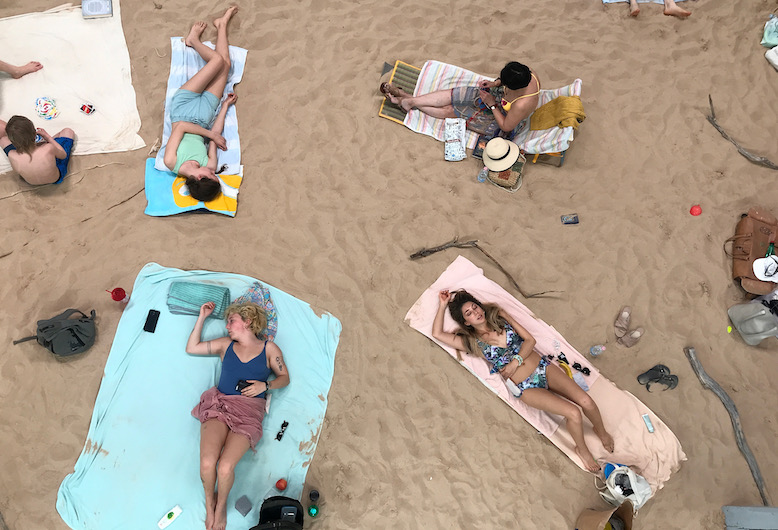 The performance piece “Sun & Sea (Marina)" took the top prize for best national pavilion at the 2019 Venice Biennale. ((David Matorin / Truthdig)
The performance piece “Sun & Sea (Marina)" took the top prize for best national pavilion at the 2019 Venice Biennale. ((David Matorin / Truthdig)
VENICE, Italy—Before a backdrop of rising global tensions and increased anxiety surrounding political change and inertia, the 58th international Venice Biennale fulfills its goal of delivering an aesthetic temperature reading of the world in 2019. The central exhibition’s title, “May You Live in Interesting Times,” is an ersatz ancient Chinese curse that uncannily reflects our present struggles with fake news and colliding cultures. But whereas the biennale’s institutional framework fails to deliver constructive alternatives in much the same way our governments have, the artists themselves occasionally offer hopeful glimpses of something better.
Known as the Olympics of the art world, the Venice exhibition (on view until Nov. 24) is host to 90 national pavilions, a curated international exhibit of 79 invited artists, 21 official “collateral events” and myriad unofficial satellite events.
The exhibit’s title, “May You Live in Interesting Times,” is attributed in its press release to a speech by British politician Austen Chamberlain in the late 1930s amid the rising tide of fascism in Europe. Curator Ralph Rugoff tempers the provocative reference later in his introduction, asking us “to acknowledge at the outset that art does not exercise its forces in the domain of politics […] cannot stem the rise of nationalist movements […] nor can it alleviate the tragic fate of displaced peoples across the globe.” Rather, he suggests, it may act as an indirect guide to living and thinking “in interesting times.” It’s a modest, if somewhat convenient, admission that in recent years would be taken as a realistic acknowledgement of the limitations of art—a check on the self-congratulatory, grandiose rhetoric that often litters art exhibition press releases. But in the same year the Tate and Guggenheim museums have rejected charitable donations from the Sackler family and the opening of the Whitney Biennial in New York is accompanied by a campaign to remove a tear gas-purveying board member, Rugoff’s modest concession comes across as a rather curious dodge—burying his head in the sand, even though his chosen artists engage the political with an array of methods.
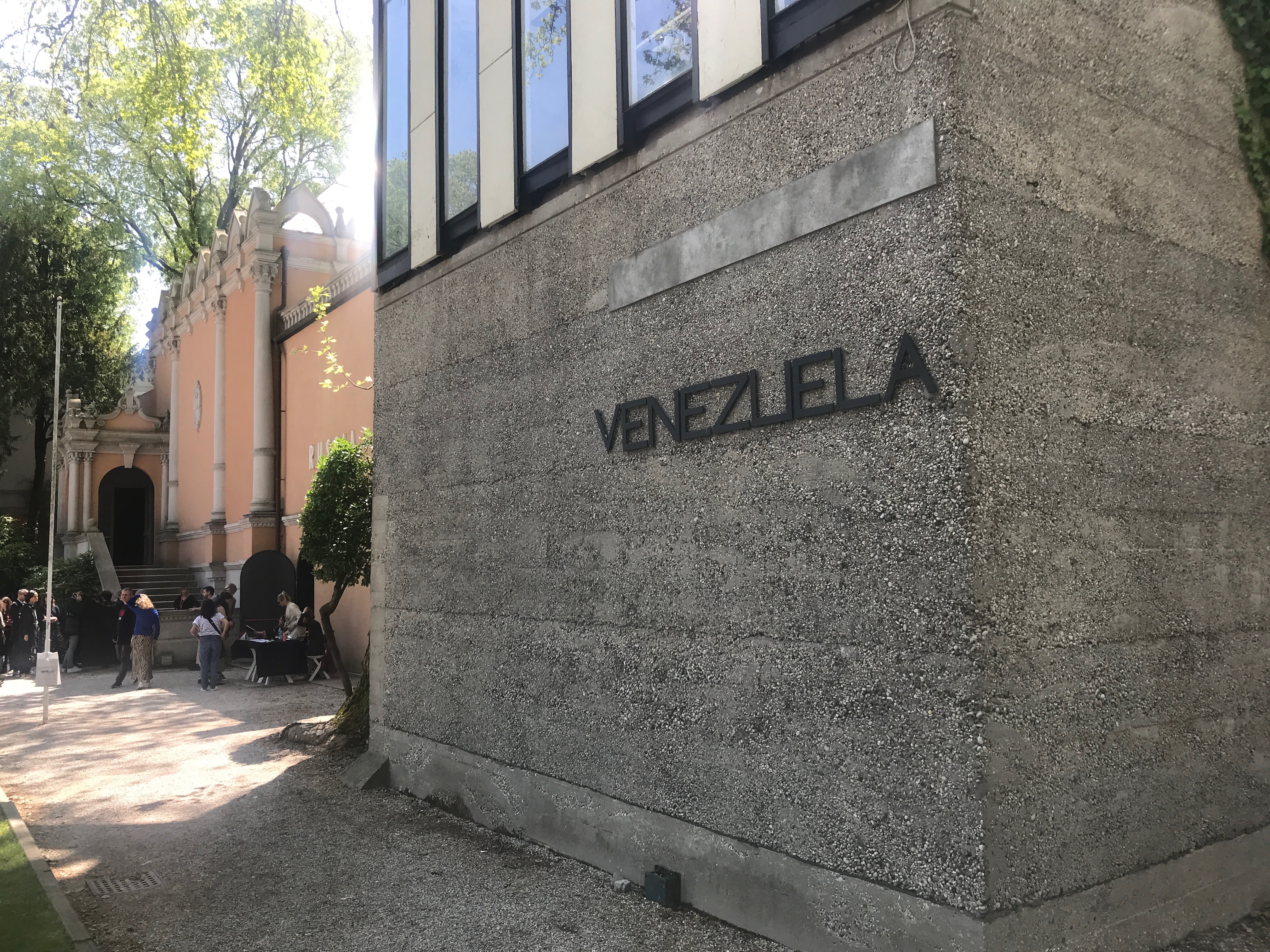
While art’s direct political powers may remain a point of debate for panels and lecture programs throughout the city, confrontations with the tangible effects of political concerns are unavoidably encountered throughout the biennale. In 2019, it is impossible to separate them from the viewing experience—from the vacant Venezuelan pavilion, which was forced to postpone its participation amid political upheaval at home, to the recurrent reminders from various artworks and the walks along the canals between them that rising sea levels threaten to submerge the host city beneath the waves before another century arrives.
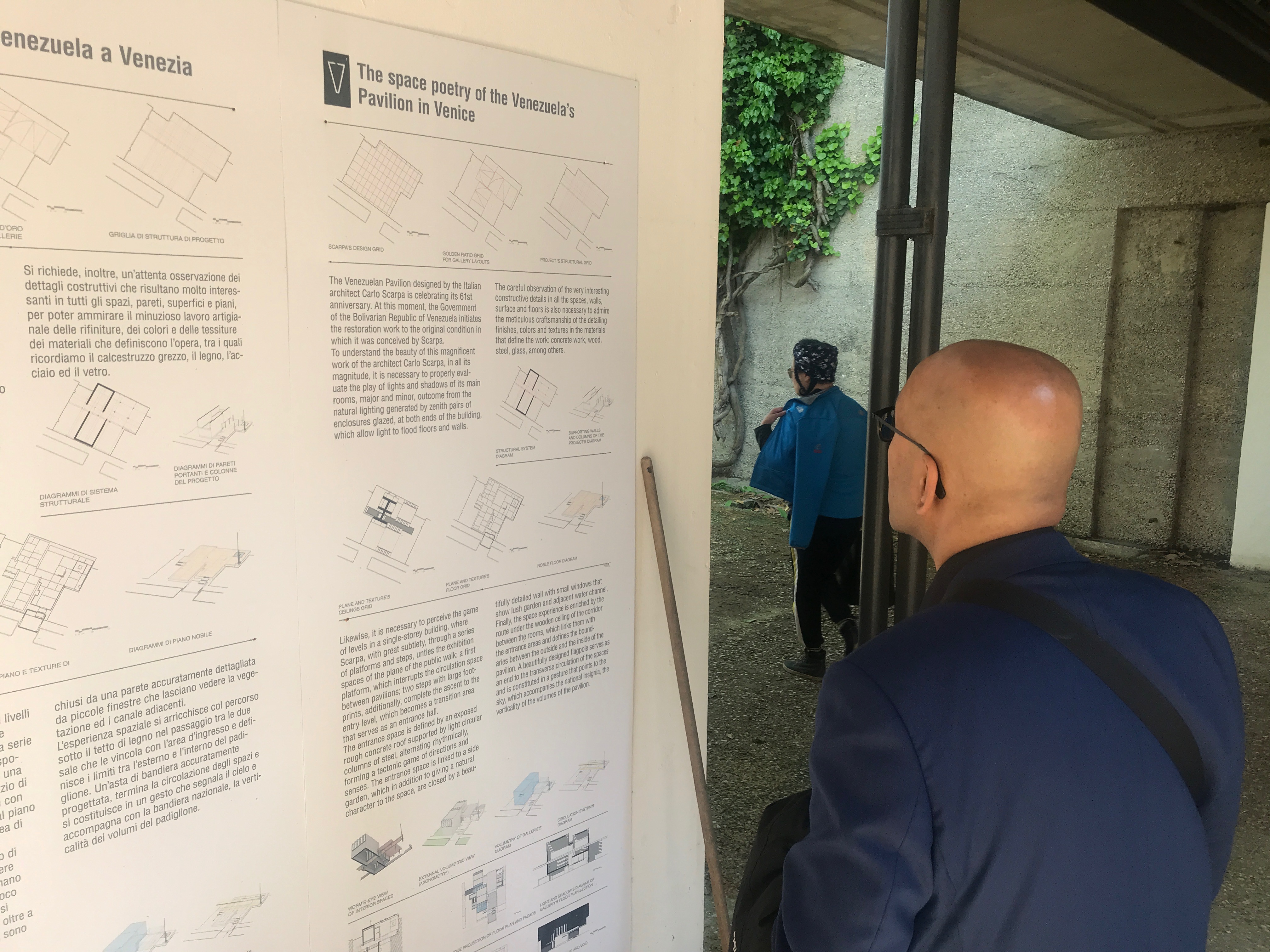
The Golden Lion for best national pavilion—the top prize at the prestigious exhibition—went to Lithuania for an operatic performance sung in swimsuits about the impending catastrophes of climate change. “Sun & Sea (Marina)” was staged continuously throughout opening week on an artificial beach installed in a warehouse of the city’s military marina. “We had the idea of the singing beach like five years ago,” playwright Vaiva Grainyte explained after the opening weekend’s performances. “We just had this vision of people lying down and singing and the audience watching them from above—these half-naked, mortal bodies enjoying the earth’s resources. And there’s this parallel between our bodies and the fragile body of the earth, so it came together very naturally.”
Grainyte and her collaborators, director Rugile Barzdziukaite and composer Lina Lapelyte, debuted their project at the National Gallery of Arts in Vilnius in 2017. Originally performed in Lithuanian, it was translated into English for the biennale. By turns irreverent and severe, the work steers clear of didacticism in favor of an oblique strategy that makes its message that much more effective by disappearing into a nuanced performance suffused with joy. Sung by the whole cast in harmony, the “Vacationer’s Chorus” ironically extolls, “You are strongly advised to stay on shore. You should not leave your children unobserved. Just build castles in the sand, walk the beach collecting stones, shells, amber, and baby teeth.”
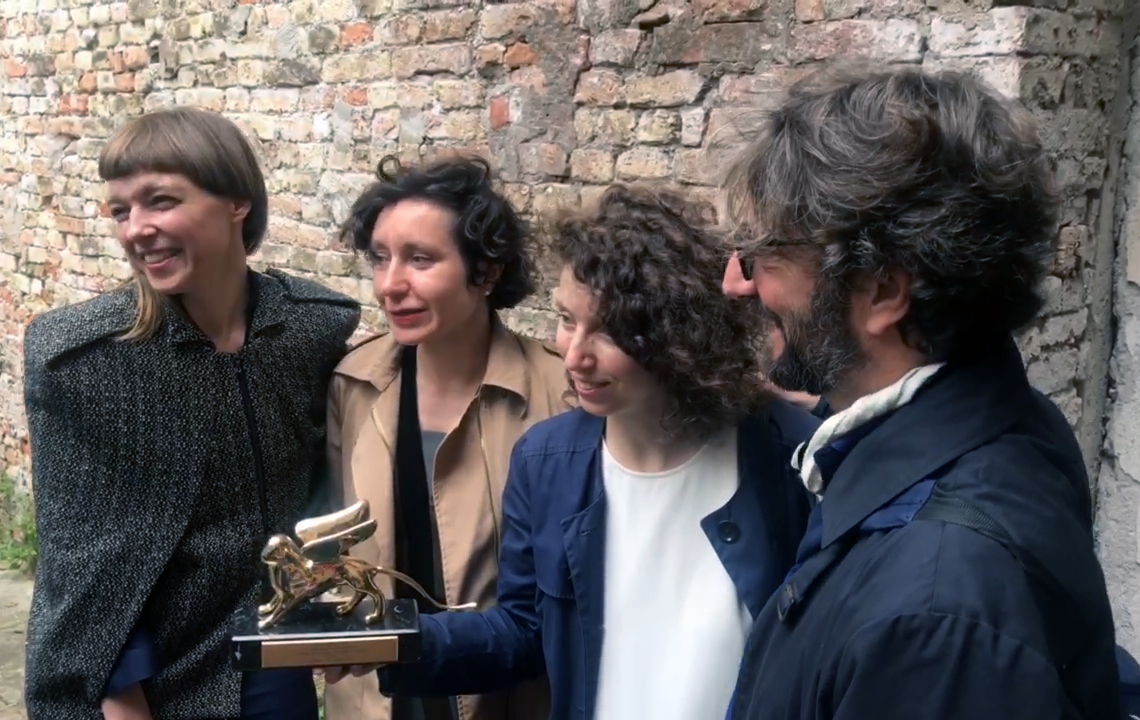
“These issues are crucial today and no artist, curator or citizen can ignore them,” Martha Kirszenbaum, the 36-year-old curator of the French national pavilion said by email, “I think our generation feels particularly concerned with climate change and the migration crisis because we feel powerless and too late to resolve it.”
The French pavilion’s entrant, “Deep See Blue Surrounding You,” a highly lauded film and installation by artist Laure Prouvost, is a hallucinatory road movie that, like “Sun & Sea (Marina),” embeds its dire themes within a sensual, enveloping experience. “Laure’s work never frontally addresses political or social issues,” Kirszenbaum explained, “but for ‘Deep See Blue Surrounding You,’ they definitely appear as under-layers of an oneiric and utopian exhibition. We conceived a project based on the representation of France today, a road trip from the suburbs of Paris all the way to Venice. The trip begins near housing projects built in the 1960s and 70s to accommodate immigrants coming from the former French colonies. Then we filmed in [an Algerian] Kabyle café in Roubaix, and of course Marseille, facing the Mediterranean Sea that has become the cemetery of our contemporary migrations in the past decade.”
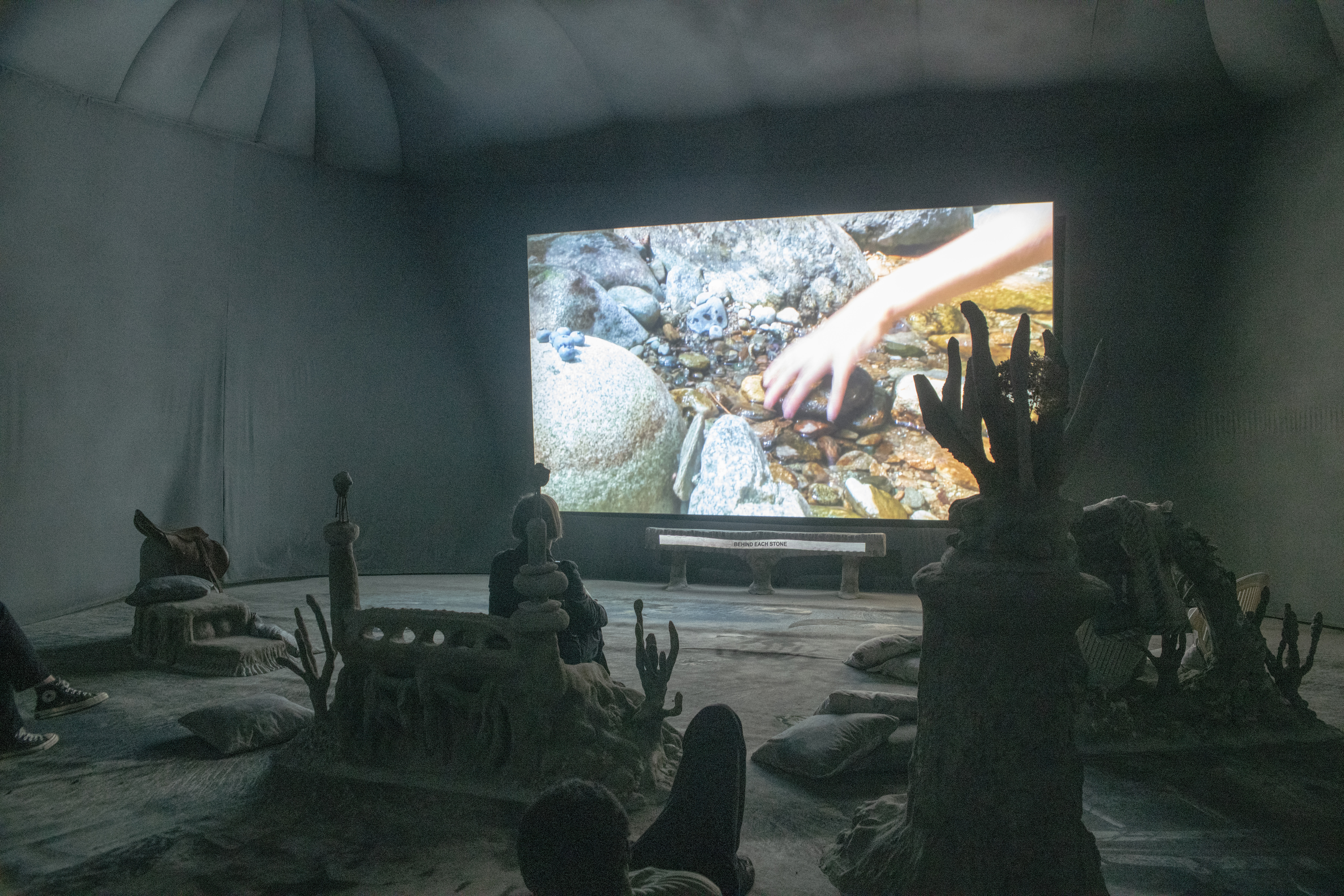
The film succeeds above all else in implicating the viewer in the present moment. It concludes with material shot in Venice itself, at times in the very pavilion where the audience watches the film. A whispered voiceover intones in French, English and Arabic: “We pulled you along to Venice. I will show you how to get in without a ticket. You are the person sitting next to you. They are arriving. They are coming. You are here.”
In the Giardini, the site of the permanent national pavilions, some official expressions of soft power are more successful than others. The French and Ghanaian pavilions have been among the most critically touted. The American and Russian entries met largely with mild indifference. Beside the empty Venezuelan pavilion stands the Russian exhibit, curated by the State Hermitage Museum in St. Petersburg. “Lc. 15:11-32” is a somewhat ponderous collection of sculptures and video created in homage to Rembrandt’s painting, “The Return of the Prodigal Son,” a prized asset of the museum’s collection. The accompanying wall text, which at times reads like a travel ad for the Hermitage, includes the biblical passage cited in the title and something approaching a trolling mea culpa from filmmaker Alexander Sokurov, a Golden Lion winner at the Venice Film Festival in 2011, who was perhaps too out of his element presented here as a contemporary artist. “It is possible that the weakness of the idea behind this show is excessive seriousness,” reads his printed quote, “an unambiguousness with no digression or compromise. Perhaps the project could have benefited from a more ironic take, a more light-hearted approach, a more superficial treatment—the way things are done sometimes with exhibitions of this magnitude, or European art installations […] but how does the public react when it’s spoken to in this manner, at arm’s length?”
Scattered throughout the city, non-state actors in the form of privately funded foundations draw biennale viewers to concurrently running shows that can often outshine the pavilions and disrupt or complicate official agendas from cultural ministries. The V-A-C Foundation was founded in Moscow in 2009 with a mission to support emerging artists from Russia and the former Soviet republics through international shows of mixed Russian and non-Russian artists. “Time, Forward!,” its curated show coinciding with the biennale, featured a three-day public event in front of its palazzo residence facing the Grand Canal. Staged by the Milan-founded, New York/Berlin-based artist collective Alterazioni Video, “The New Circus Event” featured a motley assortment of street performers, domestic artists and industrial equipment presented as wild circus animals.
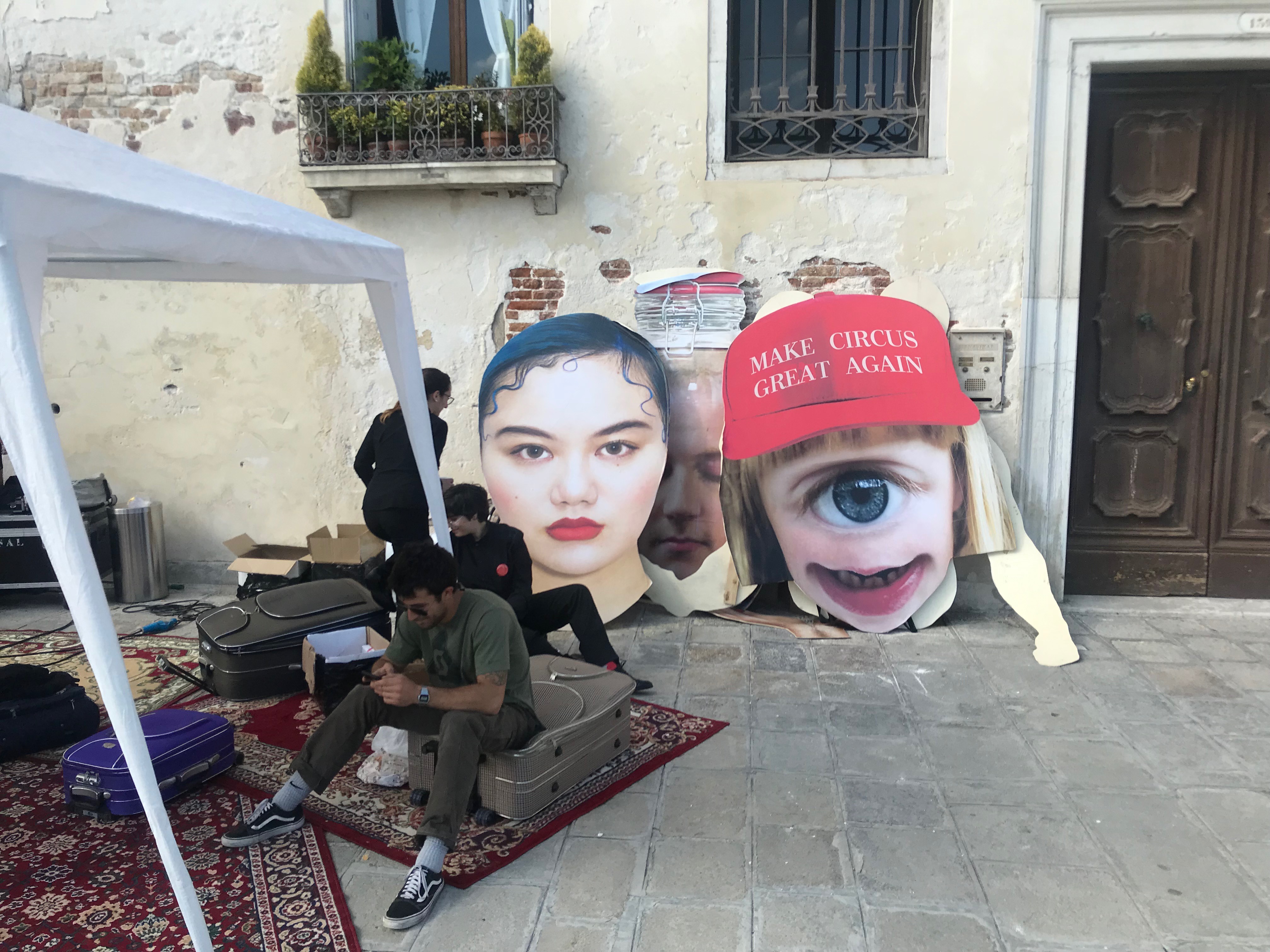
A companion remarked that the spectacle was reminiscent of scenes witnessed in Moscow after the collapse of the Soviet Union, when ordinary people stood in squares and streets to display whatever skills or possessions they had to sell in acts striking for their public intimacy. From the V-A-C’s garden bar, Alterazioni Video founding member Paololuca Barbieri explained that “The New Circus Event” was meant to commemorate the 100th year since Lenin made circus the official Russian state art. “Before this happened, circus was closer to medieval carnival, a moment of anarchy and horizontal power structures. Circus was nomadic; it would travel from place to place and people would just join in,” Barbieri said. “Then they began to build buildings, and that killed it. It became institutionalized and became something different.”
By bringing this homage to the Russian circus to the Venetian esplanade, V-A-C curator Teresa Mavica intended to inject some populism into the biennale festivities. “This was an important point to Tereza,” Barbieri said. “The spirit behind it was to create an event where Venetian people, passersby, tourists, could experience this idea of circus. Circus started as a party. Art people were not our main concern. This was a public event for the people of Venice.”
The V-A-C’s populist agenda is perhaps complicated further by its source of funding, which comes entirely from billionaire collector Leonid Mikhelson. The major shareholder of Russian gas provider Novatek, Mikhelson is one of Russia’s richest oligarchs, known, among other things, for his $150 million luxury yacht, Pacific. The V-A-C Foundation opened its permanent location in Venice two years ago and maintains others in Moscow and London. The Venice gallery is unique among art institutions in the city for being free and open to the public at all times. But it begs the question (a perennial one, relevant throughout the art world): What circumstances constitute art as a civic good when it so often comes married to such extreme concentrations of wealth?
Beside the harbor of the Arsenale, one of two locations of Rugoff’s international group effort, Swiss-Icelandic artist Cristoph Büchel’s “Barca Nostra” attracts selfies and the most criticism of any work in the biennale. As the BBC reported, a fishing vessel that left Tripoli for Italian shores in 2015 collided with a Portuguese ship and capsized, killing at least 700 migrants crowded onboard. The wreckage was recovered by the Italian government and taken to a NATO base in Sicily the following year. The artist transported the rusting hulk to Venice for the biennale with support from the Sicilian city of Augusta, which plans to permanently install the wreckage as a monument in its city center.
There’s something undeniably grotesque about the spectacle of the ship’s display. It sits by the harbor in sight of a café where biennale visitors chat and sip aperitifs. Many pass by without knowledge of the boat’s provenance or that it is presented as an artwork at all, as wall text and signage has intentionally been omitted by the artist. The exhibition catalog states, “ ‘Barca Nostra’ is dedicated to the victims and the people involved in its recovery,” but the work has managed to stir ire on both ends of the political spectrum, with critics decrying its exploitative insensitivity and such anti-immigrant politicians as Italian Deputy Prime Minister Matteo Salvini denouncing the artwork as “political propaganda.” Philippe Bischof, director of the Swiss Arts Council Pro Helvetica, commented through his press office that “Büchel lets his installation speak for itself without any explanation and invites the viewers to their own reflection on it.” He compared “Barca Nostra”—“a functional object with a tragic history, whose installation is declared an artistic intervention”—to the Swiss pavilion’s representatives, the artistic duo Pauline Boudry and Renate Lorenz. “We are dealing with two very different types of art. While Boudry and Lorenz accompany their work with texts and address themselves directly to the audience, both [they and Büchel] consciously act politically and explain their work as a reaction to political and social conditions.”
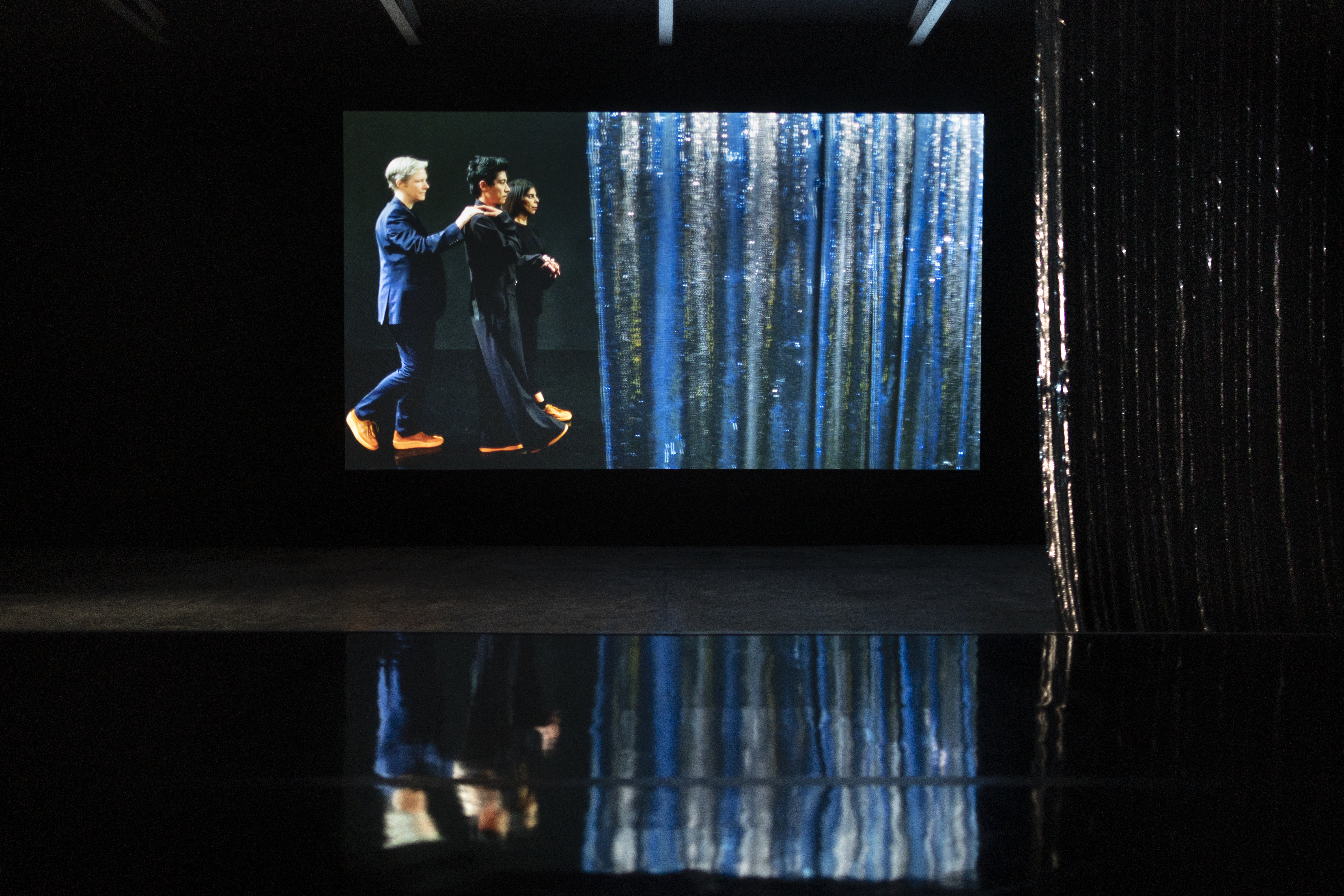
Boudry and Lorenz’s project, a video installation accompanied by a publication of essays and letters, titled “Moving Backwards,” was inspired by a story relayed through Kurdish family connections to Boudry. The anecdote described how women fighting in the snowy mountains of Kurdistan would wear their shoes the wrong way round to confuse their tracks, making it unclear whether they were coming or going. This literal backtracking as symbolic resistance culminated in the duo’s deftly executed, human-scale performance video (also titled “Moving Backwards”), which melds dance and cinematic language. Music, bodies and cameras move backwards and forwards. An ambiguous directionality emerges and explodes into a celebratory dance party where androgynous bodies, misaligned soundtracks and costumes come together in a subversively magical experiment. In one of the exhibition’s published correspondences, Tehran-based curator Azar Mahmoudian describes how, in the early 1980s Iranian suppression of leftist dissidents, “moon walking” became an act of coded rebellion. It brings to mind another apocryphal quotation—like the biennale’s title—that is often misattributed to anarchist Emma Goldman and could serve as a maxim for most of the biennale’s best works: “A revolution without dancing is not a revolution worth having.”
Your support matters…
Independent journalism is under threat and overshadowed by heavily funded mainstream media.
You can help level the playing field. Become a member.
Your tax-deductible contribution keeps us digging beneath the headlines to give you thought-provoking, investigative reporting and analysis that unearths what's really happening- without compromise.
Give today to support our courageous, independent journalists.
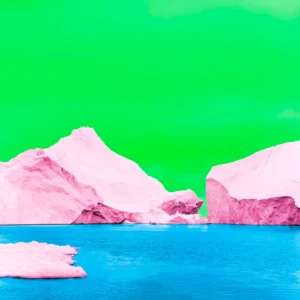
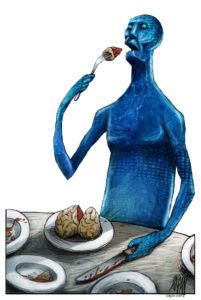
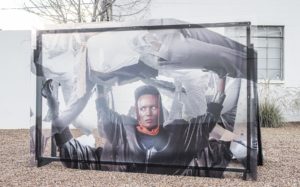
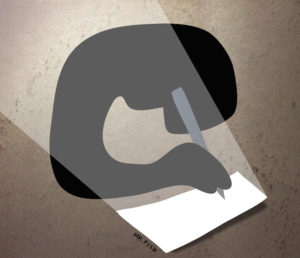
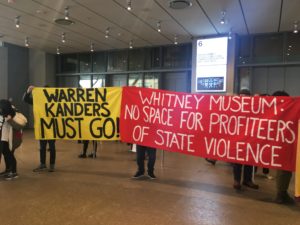
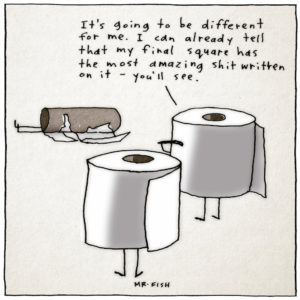
You need to be a supporter to comment.
There are currently no responses to this article.
Be the first to respond.